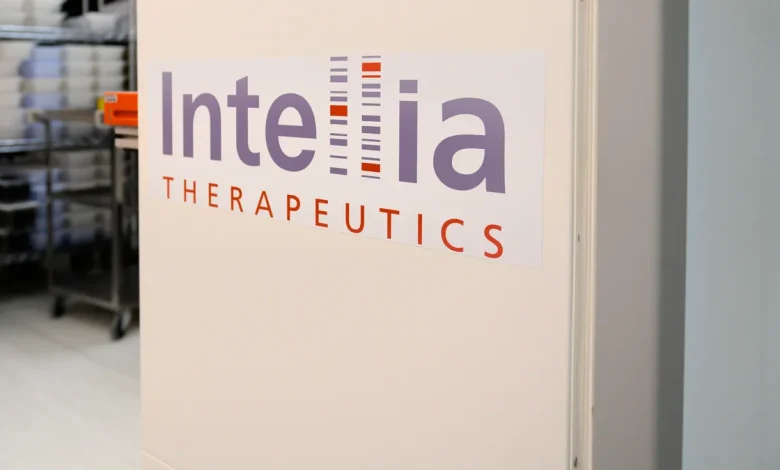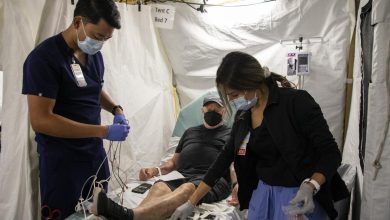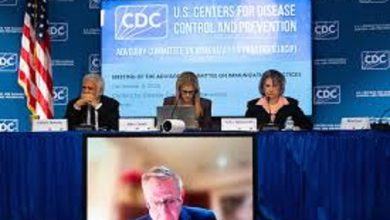Intellia’s CRISPR Trials Suspended Amid Safety Review After Patient Reaction

Intellia Therapeutics, one of the biotech firms at the vanguard of CRISPR-based medicines, announced a temporary pause in patient dosing and enrollment in two late-stage clinical trials after a participant developed a serious liver injury following treatment. The move — intended as a precaution while the company investigates the incident — sent ripples through markets, raised fresh questions about safety for in-body gene editing, and underscored both the promise and the risks of one-time, permanent genetic therapies.
What happened — the immediate facts
On October 27, 2025, Intellia reported that a patient enrolled in its MAGNITUDE Phase 3 study for transthyretin amyloid (ATTR) cardiomyopathy was hospitalized after developing signs consistent with serious liver injury. According to the company, the patient received a dose of Intellia’s lead investigational CRISPR therapy (often referred to publicly as “nex-z”) and subsequently met the trial’s protocol-defined pausing criteria due to markedly elevated liver enzymes and increased bilirubin — laboratory signals frequently used to identify acute liver stress or injury. As a result, Intellia temporarily paused dosing and screening in both MAGNITUDE and a related Phase 3 study testing the same candidate in ATTR-polyneuropathy.
Intellia said the affected patient is being closely monitored and receiving medical care. Company leadership also emphasized that other trials of different Intellia programs were not being paused and that they were engaging with regulators and external experts to understand the event. The company stated they currently suspect the issue may relate to the particular gene target rather than the delivery platform — a nuance that could determine how broadly the event affects Intellia’s pipeline.
Why the pause matters (to patients, investors, and the field)
There are three separate reasons this pause matters:
- Patient safety is paramount. Late-stage trials enroll larger numbers of patients, including those who will depend on the therapy if it reaches approval. Any serious adverse event — especially one involving the liver, which can progress quickly — must be investigated thoroughly before dosing continues. Intellia followed standard clinical trial practice by pausing when protocol criteria were triggered.
- Commercial and investor stakes are high. Nex-z had been projected by analysts to become Intellia’s most valuable asset, potentially generating substantial future revenue. News of a severe safety signal triggered a sharp sell-off in Intellia stock as market participants reassessed the probability and timing of eventual approval and commercialization.
- It’s a test for in-body CRISPR. CRISPR therapies that edit DNA inside patients (in-body) are newer and less proven than ex-vivo approaches (where cells are edited outside the body and returned to the patient). When an adverse event occurs with an in-body candidate, regulators and the public pay close attention because the edits are meant to be permanent. The industry will watch closely to see whether this is an isolated drug-specific problem or a concern with delivery, targeting, or mechanism.
A closer look at the therapy and the targeted disease
Intellia’s candidate is designed to treat ATTR, a rare condition caused by deposits of misfolded transthyretin (TTR) protein that can damage the heart (ATTR-cardiomyopathy) and peripheral nerves (ATTR-polyneuropathy). The therapy uses CRISPR/Cas9 gene editing to knock down production of mutant or misfolded TTR by editing the gene in the liver — the organ that produces the protein. The approach is attractive because a single, one-time treatment could substantially lower TTR protein levels and provide durable clinical benefit without chronic dosing.
That biology is also why liver safety is especially relevant: the therapy is delivered to and acts in the liver. Distinguishing between an injury caused by the delivery system (for example, lipid nanoparticles) versus an effect related to knocking down the TTR gene (or an immune response to on- or off-target editing) will be central to the investigation. Intellia indicated early that it believes the signal may be target-related rather than delivery-platform related, but the company and regulators will need much more data to support that conclusion.
What we know about the patient’s condition
Public reporting so far indicates the patient experienced a severe (grade 4) increase in liver transaminase enzymes and elevated total bilirubin — markers that can indicate life-threatening liver injury and, in worst cases, acute liver failure. Intellia said the event met protocol-defined pausing criteria; clinical trial protocols normally establish clear thresholds for stopping enrollment or dosing when serious adverse events occur. The company also said the patient was dosed on September 30, 2025, and was being treated and monitored. Beyond those confirmatory facts, regulators and investigators will seek the patient’s detailed medical history, co-medications, timing of symptom onset, and any other potential explanations (viral hepatitis, alcohol, other drugs, or underlying liver disease).
How regulators and the company will proceed
When a protocol-defined safety pause happens, the typical next steps include:
- Immediate clinical care for the affected patient and collection of comprehensive clinical data.
- Blinded (and sometimes unblinded) safety review by the trial’s independent Data Monitoring Committee (DMC) and company safety teams to determine whether the event plausibly relates to the therapy.
- Engagement with regulators (FDA, EMA, or other national agencies) to share findings and agree on steps — which can include protocol modifications, additional monitoring requirements, or rescinding the pause if the event appears unrelated.
- Additional preclinical or mechanistic studies to test hypotheses about cause (for instance, studies in animal models to assess liver histology or off-target editing).
- Communication with trial sites and patients so they understand the pause, safety measures, and next steps.
Intellia stated it is working with regulators and stakeholders to develop a strategy to resume enrollment as soon as appropriate. How fast that happens depends entirely on what the investigations show. If the event is judged isolated and unrelated, the pause could be lifted relatively quickly; if it reflects a reproducible toxicity, the path forward could require substantive protocol redesign or additional studies.
Market reaction and business implications
Unsurprisingly, the market reacted sharply. Intellia shares plunged immediately after the company’s announcement, reflecting investor concerns about delayed timelines, the potential need for additional studies, and uncertainty over the therapy’s safety profile. Analysts noted that while the company has other programs, nex-z represents a large portion of its near-term expected value, so uncertainty around the candidate materially affects Intellia’s outlook. Still, some analysts expressed cautious optimism that risk-mitigation strategies could allow the program to eventually continue if the event is drug-specific and manageable.
For Intellia, the pause will likely increase near-term operating costs (additional investigations, communications, potential additional monitoring) and delay milestones that investors were counting on. For patients and clinicians awaiting a new treatment option for ATTR, any delay is frustrating because it slows access to a potentially transformative single-dose therapy.
What this means for CRISPR and gene-editing therapeutics
One safety signal in a late-stage trial can reverberate beyond a single company. Observers in biotech and regulatory circles will be alert for whether the root cause implicates the CRISPR editing mechanism, the delivery vehicle, or the specific gene target. Past episodes in biotech have shown that sometimes a safety problem is product-specific and can be addressed by dose adjustments, monitoring, or patient selection; other times, the issue has broader implications and forces rethinking of approach.
It’s worth remembering that CRISPR-based medicines have already produced approved therapies and promising clinical results — notably ex-vivo gene-edited cell therapies and other in-body programs — but each new modality brings its own safety profile. Industry experts and regulators will use this case to refine monitoring guidelines, informed consent language, and risk-management strategies for future in-body gene editing trials.
Voices from experts and watchers
Coverage from scientific and trade press has been cautious but pointed. Industry analysts emphasized the need for careful investigation rather than reflexive pessimism, noting that more than 450 patients had been treated with nex-z across studies and that a single event among hundreds does not necessarily mean an inherent fatal flaw — but it does demand rigorous follow-up. Scientific reporters noted that prior Intellia trials had previously seen isolated liver events that resolved, and investigators will scrutinize whether there are shared risk factors (age, comorbidities, concomitant medications) among affected patients.
Regulatory authorities typically err on the side of patient protection. Independent safety monitors (DMCs) examine blinded data to determine causality and whether the benefit-risk profile remains favorable. The broader research community will watch how transparent the company and regulators are in sharing findings — transparency helps clinicians, patients, and other companies learn faster and reduce preventable harm.
For patients currently enrolled or considering enrollment
If you—or someone you care for—are enrolled in one of the affected trials, expect your study team to contact you with details. Key points that trial participants commonly want to know:
- The sponsor will explain why dosing paused and describe medical follow-up for the hospitalized patient.
- You should be told what monitoring steps the sponsor will add (if any) and what warning signs to watch for.
- If you wish to withdraw from the trial, your right to do so is unchanged; your clinical team should also explain alternative care or approved therapies.
- Trials have independent oversight to protect participants; pauses initiated by protocol criteria are part of that safety net.
What comes next
Investigators will analyze clinical labs, imaging, and any biopsies or viral testing to rule other causes in or out. The DMC and regulators may request additional data or hold a teleconference to review findings. Depending on the outcome, possible next steps include lifting the pause, modifying dosing or inclusion criteria, expanding monitoring, or, in the worst case, permanently halting the program. Intellia’s emphasis that other programs remain active reflects both prudence and an effort to isolate the issue to the affected candidate pending evidence.
Conclusion — balancing promise with prudence
Intellia’s pause is a sober reminder that cutting-edge science carries real risks alongside its potential to transform care. CRISPR gene editing remains one of the most exciting advances in medicine, promising single-dose therapies for previously untreatable conditions. But with permanence comes responsibility: the obligation to investigate adverse events aggressively, transparently, and methodically to protect patients and preserve public trust.
Whether this episode turns out to be an isolated adverse reaction, a manageable risk, or a sign of a deeper problem will become clearer as data are analyzed and shared. For now, the pause is proper clinical caution in action — a moment for the field to apply rigorous science and for stakeholders to keep patient safety first.




